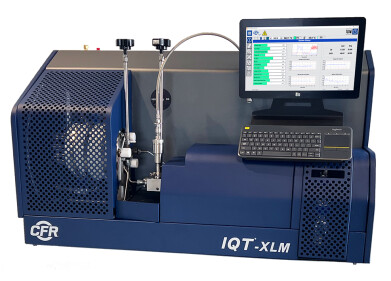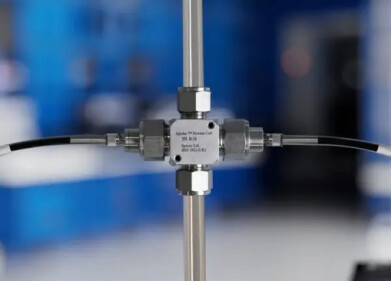Analytical Instrumentation
Optimising Hydrocarbon Processing Using GC-HPMS
Aug 15 2016
Processed hydrocarbons from crude oil and natural gas are used extensively to manufacture many of the chemical and consumer products we use everyday. Even after refining, crude oil distillates can contain hundreds of different hydrocarbon species, and a number of impurities that often need to be identified and quantified.
Ensuring Process Stability & Product Purity
The oil refining and gas processing industries rely on more than 1,500 primary production facilities that process more than 90 million barrels of crude and natural gas each day. In order to ensure product consistency and purity, plant operators and producers must frequently test feed and product streams at various stages throughout the process. To do this, refineries and processing plants have historically deployed laboratory-based gas chromatography (GC) analysers to monitor hydrocarbon process streams. However, these instruments are often complex, require multiple valve/column combinations, and can lack the selectivity and sensitivity required to positively identify low concentrations of specific compounds present in the complex matrices.
To Mass Spectrometry and Beyond
More advanced analysis can be accomplished using mass spectrometry (MS), a well-established analytical technique for measuring the mass of charged molecules. Combining GC with MS brings the compound-separating power of GC together with the molecule identifying precision of MS. Despite offering numerous advantages over traditional techniques, GC-MS has seen limited deployment at hydrocarbon processing facilities. This is mainly due to high initial cost, size, system complexity, an absolute requirement for high vacuum (0.0001 Torr) and the specialised maintenance needed to keep such systems operating continuously.
New fieldable analytical technologies, designed from the ground up using the latest miniaturized components, are quickly gaining traction. These tools offer improved analytical performance and provide tangible advantages over legacy analyser systems. They can also be easily deployed for on-line hydrocarbon processing and within centralised quality control laboratory environments.
Recognising the current appetite for fieldable analytical solutions, we set out to combine a novel high-speed capillary GC separation technology with our patented high-pressure mass spectrometryTM (HPMS) detector. As discussed previously, HPMS is literally the act of performing mass spectrometry at much higher pressures – 10,000 times higher pressure than that required to operate a conventional mass spectrometer. Using this approach, we’ve developed a universal petrochemical analyser, G908TM, that provides exceptionally fast compositional and purity analysis. This system improves efficiency and significantly reduces operating costs for applications that range from upstream exploration and extraction to downstream manufacturing and retail.
Adding HPMS to Your Plant Processing Toolkit
By combining ballistic GC with our patented HPMS technology, the requirement for long GC columns, thermally inefficient hot air GC ovens, as well as continuously operating roughing and turbo-molecular vacuum pumps, required for regular GC-MS systems, has been eliminated. This enables plant operators to leverage the analytical power usually associated with traditional GC-MS systems in a much smaller and easier to use device. As a result, implementing these tools for routine, robust, on-line and at-line analysis has become entirely feasible.
G908 offers analysts and plant operators a number of unique benefits over currently fielded process GC systems. Due to the decreased cycle times and improved selectivity and sensitivity of provided by G908, users can rapidly identify and quantify specific compounds, including low-level impurities, within complex product stream matrices. In addition, since G908 is not restricted to laboratory use, it can be utilised directly on site, ensuring that contaminants are identified more quickly. Furthermore, the intuitive, configurable user interface and advanced analytics capabilities make it possible for both technical and non-technical users to achieve accurate results.
While centralised lab analysis will always be needed, fieldable tools offer a competitive alternative that enables operators to save valuable time, money and man hours – all the while ensuring that the highest quality products reach a diverse spectrum of downstream applications.
By: Graham Shelver, Commercial Leader - Applied Markets, 908 Devices
For more information on 908 Devices’ GC-HPMS technology, visit https://ilmt.co/PL/jWyN.
Digital Edition
PIN 25.5 Oct/Nov 2024
November 2024
Analytical Instrumentation - Picturing Viscosity – How Can a Viscometer or a Rheometer Benefit You? - Sustainable Grease Formulations: Evaluating Key Performance Parameters and Testing Method...
View all digital editions
Events
Dec 03 2024 Dusseldorf, Germany
Dec 08 2024 Anaheim, CA, USA
Turkey & Black Sea Oil and Gas
Dec 11 2024 Istanbul, Turkey
Dec 19 2024 Aurangabad, India
Jan 20 2025 San Diego, CA, USA



















